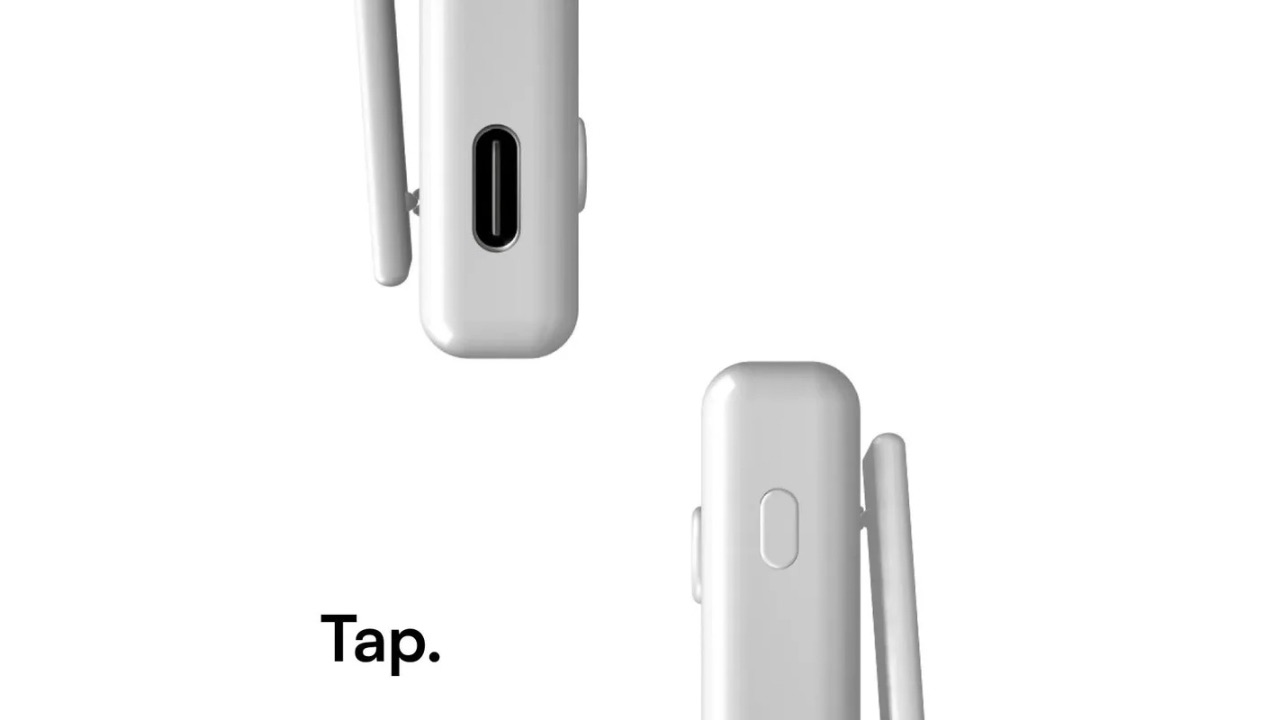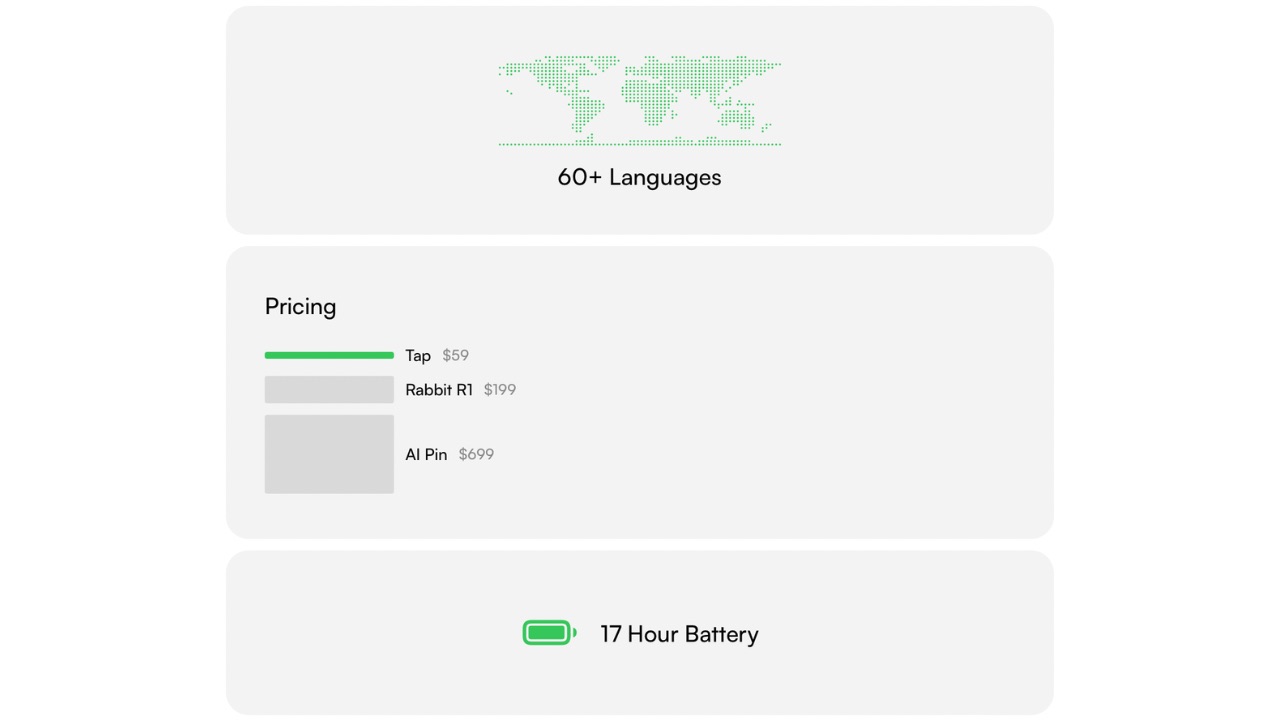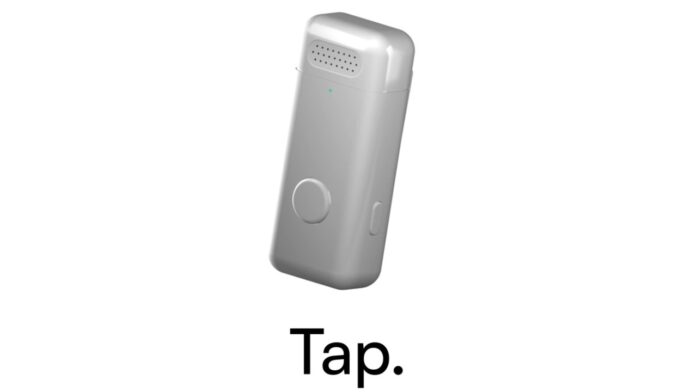The market for AI companion devices is growing, but initial reviews of the Human AI Pin and the Rabbit R1 suggest they have a long way to go. Now, a new brand called Tap is entering the segment with its first hardware product, also called Tap. It is an AI wearable companion. How does it compare to the other two devices already available, and should you consider buying it? We have our thoughts on the matter, which are outlined below.
What is Tap?
Tap is a sub-brand of Hole Systems, and their wearable companion is the company’s first venture into hardware. To understand Tap, it’s important to know the goal of Hole Systems. According to the company, they aim to create an operating system that not only captures data but also understands user intentions, respects preferences, and adapts to unique needs. They envision this system as a true companion in the digital realm, and it’s what they call Hole Systems. This represents the brand’s vision for the future of computing.
The company is currently developing AI-based software named Operator, which can function as a personal AI assistant or a chatbot. According to Hole Systems, this software is the first step towards a future where devices will act as curators of essential information, collaborators in thought, and creators of solutions.
Coming back to Tap, the device is set to be loaded with an “Operator” at some point in the future. One can communicate with the operator with inputs. Think of them as your bridge to command and interact, translating your text, voice, or file commands into actions seamlessly. In return, the output is designed to be more tailored to your needs and personality because that’s what the operator does when it thinks and remembers before replying.
Instead of static memory limitations, the Operator employs dynamic Brain Functions that evolve with user interaction. This creates a memory system that anticipates needs and aligns with intentions, making interactions contextually relevant and intuitively connected.
As of now, Tap is powered by OpenAI’s GPT 4 AI model. The device hooks onto you with a clasp and there’s a button on the front called ‘Tap Toggle’ which you’ll have to press before speaking to the wearable. Once you are done with your query, it’ll give you a reply through your smartphone’s speaker. Batch one devices do not have a speaker while the batch two Tap devices will support a speaker as an additional accessory. The device also has a power button and charges via a USB-C port. It’s available in a single white colour.
Tap AI Wearable Companion: Features
The Tap device has features such as access to GPT 4 and GPT 3.5 models. It supports the memory feature to help you remember what you tell it to and spit out tailored responses. It also has a privacy-based Browser function to browse the web with your voice.

The device only activates upon your command. It does not have an “always listening” feature, and while its active, the privacy light indicator also turns on. As its a privacy-focused device, all data transmissions, including voice interactions, operate within the 2.4 – 2.48GHz frequency, ensuring secure communication within a 10M range.
You can customize your interaction settings, giving you control over what information the device remembers or forgets. Tap says that its device and software are designed to minimize data collection and maximize user control, aligning with privacy-by-design principles.
Tap can tell you about the weather, has a built-in translator, and supports more than 60 languages. There’s also an interpreter mode, different custom voices, and an alert messages feature. It doesn’t support a SIM card and connects wirelessly via Bluetooth LE. It supports fast charging, has a total charge time of 1 hour, and has a runtime of up to 17 hours.
Read More: Top Rabbit R1 Alternatives – It Doesn’t Include Humane AI Pin
Tap AI Wearable Companion: Price, Availability, Roadmap
The Tap AI device will be available for $59 on Product Hunt, and the company will initially sell a total of 400 units during batch 1. Simultaneously, the brand will also launch the Tap application. In the next phase, the Operator app will go live and be integrated within Tap devices, which will facilitate AI memory recall feature.
Then, batch 2 of Tap devices will go live with modifications along with accessories. Finally, in the last phase, the Operator web portal will be made live so you can download and view your operator’s data.
Tap AI Wearable Companion: How is it different (or the same as) from Humane AI Pin & Rabbit R1?
Both the Humane AI Pin and the Rabbit R1 have been met with disapproval from consumers and professional reviewers, who have described them as half-baked products that aren’t ready for consumer use.
The Tap AI takes a slightly different approach with its affordable price tag and that’s one of the main differences between its own device and that of Humane and Rabbit. The Humane AI Pin costs $699 plus a subscription while Rabbit R1 costs $199. Despite there being other differences apart from price between the three devices, Tap is confident that its AI wearable companion can give the other two a run for their money.

So much so that it explicitly compares its price with that of the other two companies’ products, as shown in the screenshot above. Humane and Rabbit’s devices do have superior hardware, which is why their prices are on the higher side. This includes a projector in the Humane AI Pin and better build materials, a display on the R1, and more.
Tap and a similar product share the same purpose – to provide users with an accessible AI companion that can replace a smartphone. Tap believes that an AI wearable can be closer to the user than a phone in their pocket, allowing it to learn and adapt to the user’s needs without being intrusive. It can blend into the background when necessary, and appear when needed. This level of integration enables the AI to understand the user’s intentions and preferences more accurately, resulting in a more personalized experience.
Tap’s approach is a more acceptable one because of the affordable price. Moreover, it isn’t trying to train and implement its own model into the Tap device as of now and is powering it with the much trusted model, which is GPT 4. That leads us to believe that its responses, in theory, should not only be quicker but also more accurate and consistent than the terrible performance we have seen from Rabbit R1 and Humane AI Pin.
Max Jacob, co-founder at Hole Systems, has been posting videos of the device in action on his X social media account and from the looks of it, the device does seem to give users responses quickly.
If Tap were to meet the same fate as Humane AI Pin and Rabbit R1, only time will tell. However, given that the Tap device is significantly more affordable than the other two, we believe it has the potential to excel in its intended purpose. While replacing a smartphone may still not be a near-future goal, as a standalone AI wearable companion, the Tap device might prove to be superior to its competitors.


